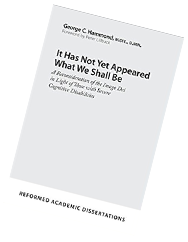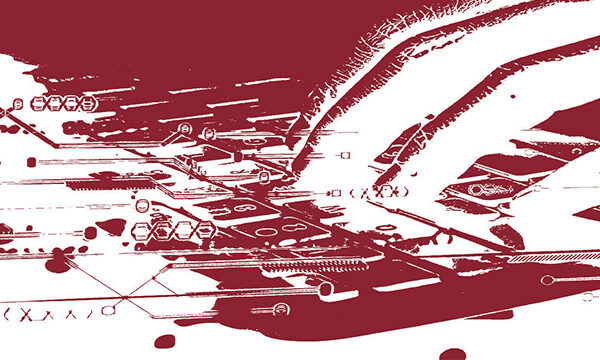Back to series


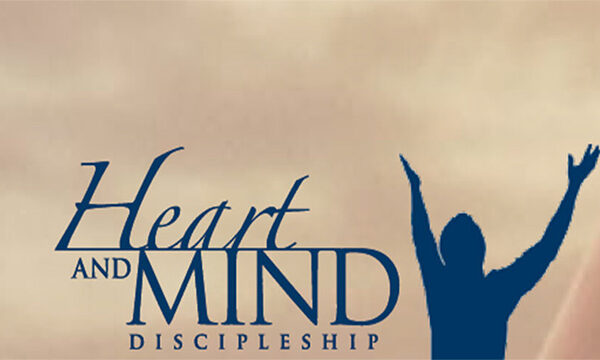
Download or Listen to Audio
Rethinking the Image of God in Light of Those with Severe Cognitive Disabilities
Click here to open a Print - Friendly PDF
Then God said, “Let us make man in our image, after our likeness. And let them have dominion over the fish of the sea and over the birds of the heavens and over the livestock and over all the earth and over every creeping thing that creeps on the earth.”
So God created man in his own image, in the image of God he created him; male and female he created them.
— Genesis 1:26 – 27 ESV
 What does it mean for human beings to be created in the image of God? Theologians throughout the centuries have given different answers to this question. An early approach to the doctrine was to look for the image of God in those qualities that separate human beings from animals. This often included all or any combination of humankind’s ability for abstract reasoning, the capacity for language, and the ability to exercise dominion over the rest of creation. Some early theologians included the upright posture of human beings: while the beasts gaze at the earth, human beings stand upright and can look to heaven.1
What does it mean for human beings to be created in the image of God? Theologians throughout the centuries have given different answers to this question. An early approach to the doctrine was to look for the image of God in those qualities that separate human beings from animals. This often included all or any combination of humankind’s ability for abstract reasoning, the capacity for language, and the ability to exercise dominion over the rest of creation. Some early theologians included the upright posture of human beings: while the beasts gaze at the earth, human beings stand upright and can look to heaven.1
Theological Models and Their Brush with Realities
Due to the influence of neo-Platonism,2 throughout the medieval period there was a growing tendency to associate the image of God with only the incorporeal aspect of human beings, seeing the image of God as consisting in things such as the soul, or the intellect, memory, and will. In the church’s reformation in the sixteenth century, the doctrine of the image of God was reassessed; while there were some significant exegetical insights, there was little practical shift or progress in the understanding of the doctrine or its practical implications.
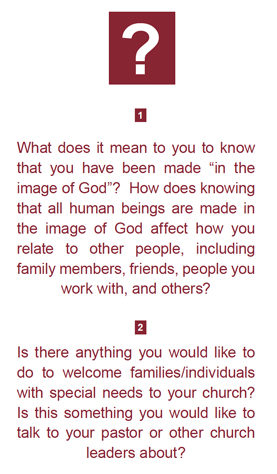 In the early twentieth century, Karl Barth suggested that the image of God is reflected in relationship. He reasoned that because God is triune — one God eternally existing in three distinct Persons — the image of God is found, not in an analogia entis (an analogy of being), but in an analogia relationis (an analogy of relationship).
In the early twentieth century, Karl Barth suggested that the image of God is reflected in relationship. He reasoned that because God is triune — one God eternally existing in three distinct Persons — the image of God is found, not in an analogia entis (an analogy of being), but in an analogia relationis (an analogy of relationship).
Many modern theologians see these approaches to the image of God as complementary rather than being in competition with each other. Most of them, however, will see one approach as predominant, and the other approaches as supplemental.4
There’s a difficulty with these approaches. They all contemplate the image of God with respect to typical human beings.
Imagine with me a young couple eagerly expecting the birth of their first child. Everything has gone as expected with the pregnancy. As soon as the baby is born, however, there is a flurry of activity and whispers. Although they’ve never done this before, the couple intuitively senses that something is wrong. Rather than being given to the mother, the baby is whisked away for a series of tests. One of the doctors explains that “there appear to be abnormalities, but we can’t say more without tests.”
Hours later a doctor with grave expression comes in to speak with the parents as the baby is brought back into the room. The baby has been diagnosed with lissencephaly, a rare brain disorder in which the gyri (folds) and sulci (grooves) of the cerebral cortex have not developed. With medications, they can control the seizures, but his condition is severe; his intellectual, social, and motor development will never progress beyond that of a three-month-old.
 Is this child made in the image of God? Reflexively Christians will answer yes, but how does such a child fit our theological paradigms? The child will never have the capacity for abstract reasoning, for the development of receptive or expressive language, and he will never exercise authority over anything, including his own basic physical needs. At best there will be no expression of and at worst no existence of capacities such as memory and will. He will never marry and is unlikely to have many relationships outside of his immediate family. Depending on the severity of his condition he may be little aware of the existence of other people.
Is this child made in the image of God? Reflexively Christians will answer yes, but how does such a child fit our theological paradigms? The child will never have the capacity for abstract reasoning, for the development of receptive or expressive language, and he will never exercise authority over anything, including his own basic physical needs. At best there will be no expression of and at worst no existence of capacities such as memory and will. He will never marry and is unlikely to have many relationships outside of his immediate family. Depending on the severity of his condition he may be little aware of the existence of other people.
If, as is traditionally held, the image of God is to be found in the intellect, in abilities and attributes that separate humans from animals, then to say that such a person is made in the image of God seems to be merely sentimental wishful thinking, for this person bears none of the criteria necessary to be made in the image of God.
This is a thought-exercise in ethics for most people, but it is not for me. In 2002 my youngest daughter, Rebecca, was born. It would soon be manifest that she is in the .055 percent of the population that has severe or profound cognitive disability.5 In her case, there has never been a clear diagnosis of her condition.
I was theologically unprepared for this, and it caused a crisis for my own faith. The more I read the approaches to the doctrine of the image of God from the early centuries to the present day, the more anguished I became. Rebecca did not fit the criteria for being made in the image of God.
In my heart, I knew that Rebecca and people like her had to be made in the image of God, but she did not fit the theological models for human beings as made in the image of God. Many Christian people, pastors, and writers embrace the traditional models but will not follow them to their logical conclusions when dealing with such cases. They include such people as being made in the image of God as an anomaly. In the physical sciences, however, anomalies (the deviation from what is expected) are never in the things being studied. Anomalies always highlight a weakness in the theory used to describe the things studied.
Some modern theologians have seen the problem and have tried to address it. Nancy Eisland, for example, has tried to address the problem by locating the image of God in disability itself (rather than in some ability or capacity such as intellect, or dominion, or relationship). Her approach, however, not only holds out no hope (she envisions an eschatology of universally disabled people worshiping a disabled God who has been left permanently crippled and broken by the crucifixion) but makes typical people the anomaly when considering the image of God.6
God’s bringing my daughter into my life drove me back to the Scriptures to reconsider what it means for human beings to be made in the image of God. The theological models formulating the doctrine largely encompassed only typical people in the prime of life. Is it possible to formulate a better, more accurate model, one that considers Rebecca and people like her? Over the next decade, I began to read the Scriptures with new eyes.
A Deeper Look at Scripture
 What I had not seen before was that being made in the image of God is rooted in God’s declaration, “Let us make man[kind] in our image,” and the resulting “so God created man in his own image, in the image of God he created him; male and female he created them.” It is only after creating mankind in the image of God that He gives directives for dominion, for obedient relationship, and propositional interaction that includes language, intellect, and understanding. This fact, I believe, is key to formulating a more accurate and more inclusive image-of-God theology.
What I had not seen before was that being made in the image of God is rooted in God’s declaration, “Let us make man[kind] in our image,” and the resulting “so God created man in his own image, in the image of God he created him; male and female he created them.” It is only after creating mankind in the image of God that He gives directives for dominion, for obedient relationship, and propositional interaction that includes language, intellect, and understanding. This fact, I believe, is key to formulating a more accurate and more inclusive image-of-God theology.
The approach of theologians past and present has been to try to locate the image of God in those qualities and abilities that we have in common with God and that separate us from the animals. These qualities and abilities then effectively become criteria by which to judge the presence (or potentially the absence) of the image of God. But this is precisely the reverse of what we find in the Scriptures.
In Genesis 1, man as the image of God is rooted in God’s declaration and creation of human beings. Everything else that might be identified with the image of God is the result of being created in the image of God. Those faculties and abilities do not constitute the image of God.
This is very good news, not only for people born with severe cognitive disabilities, but for all of us, because in Genesis 3 we are told that something catastrophic happened. In humankind’s rebellion against God, we, all of us, became very broken so that none of us expresses the image of God as fully as we otherwise would have.
As an analogy, consider the images we have discovered of the Phoenician god Baal, from the ancient Near East. The most striking feature of Baal is a long protrusion on the top of his head. Imagine if archaeologists were to discover such a statue but with the long protrusion broken off and missing. They would not conclude “this used to be an image of Baal.” They would recognize the statue as an image of Baal that had been broken. The protrusion is not what makes it a statue of Baal. The intention of its creator is what makes it an image of Baal.
Human beings — all human beings — are the image of God because that is what God has created them as. The “fall of man” has made it so that the image is broken; that is true in all of us, in some more visibly than others. Being made in the image of God is not diminished by being broken. Rather, it is something established by the intention of the Creator.
Implications for the Church
What implications does this have for the church? In 1 Corinthians 12, Paul tells us that the members of the body of Christ who are “unpresentable” are necessary for the body. Surely this includes and encompasses the most vulnerable among us, those with lifelong disabilities. It is the duty of the church not only to tolerate such people in her midst, but to embrace and welcome them and their families. How can the church do this?
Due to relative size or resources, some churches may feel ill-equipped to have a special-needs ministry. The good news is you don’t need one. In fact, there is a danger to having a special-needs ministry. Unless a church is very careful, it could end up creating a special-needs “leper colony,” a place where such people are ministered to separately, away from the rest of the body. This would be the very opposite of what Paul envisions when he speaks of such people being a necessary part of the body.
The first thing that the church (and that means you) can do is to warmly welcome families with a member who has severe cognitive disabilities. Be sure to welcome not only the family, but also the individual person. Often people with disabilities are politely ignored. Most people, no matter how impaired, can sense when they are welcomed even if they can’t respond. Even if you suspect they can’t understand your gestures of friendship, make them anyway. Jesus said, “as you did it to one of the least of these my brothers and sisters, you did it to me” (Matt. 25:40).
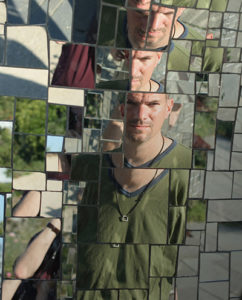 Understand that the parents of children with severe cognitive disabilities will be perpetually exhausted. In the case of my own daughter, she must be watched constantly. Watching a Rebecca is not like watching a toddler. Watching her means following her and doing nothing else. No reading, no watching television, no browsing the internet. Not everyone’s situation will be like ours, but what all such families will have in common is the inordinate amount of time and effort spent on the care of another who cannot care for him – or herself.
Understand that the parents of children with severe cognitive disabilities will be perpetually exhausted. In the case of my own daughter, she must be watched constantly. Watching a Rebecca is not like watching a toddler. Watching her means following her and doing nothing else. No reading, no watching television, no browsing the internet. Not everyone’s situation will be like ours, but what all such families will have in common is the inordinate amount of time and effort spent on the care of another who cannot care for him – or herself.
You can help bear this burden (see Gal. 6:2) by offering to care for the child during the service so that the family can rest and worship. Perhaps you could set up a rotation with other caring people, so that the parents would have responsibility for the child one Sunday a month, and three or four other people would take the responsibility the other Sundays.
Beyond the walls of the church, you could arrange for the care of the child so that the parents can go out for an evening together. Do not underestimate the impact of such a ministry. Although statistics differ, parents of children with severe disabilities have a staggeringly higher-than-average divorce rate. A ministry of care beyond Sunday morning could be a marriage saver.
Welcoming such families will mean understanding that such children put serious restrictions on families. Turning down your invitation for the family to come over is not a snub, nor does it mean that the family doesn’t need and crave fellowship. The dangers (many typical households are full of dangers to people with cognitive disabilities) make a friendly, informal visit to a friend’s house impossible. My family has had to turn down and miss many fellowship opportunities for just this reason.
To show hospitality to such a family, you and your family or others from the church can make dinner and take it over. Or you could ask the parents what you would need to change at your house for them to be feel at ease with their child there, and assure them that you really want to know. Be persistent. Politeness will likely cause them to turn down your first inquiry.
Finally, be careful with your suggestions. People can make suggestions out of true concern, not realizing the pain they cause. “You two should go away on a cruise for a week to get away from it all.” What are they to do with the child while they are gone?
Where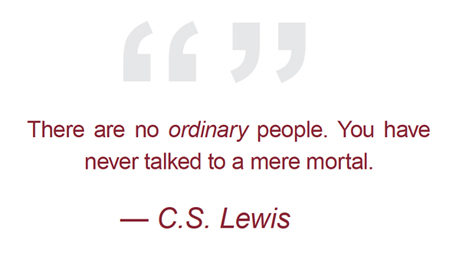 will they find the money? (There is significant cost to having a child with severe disabilities.) If you make such a suggestion …doing so with an offer to help (or maybe to take responsibility) for the care of the child while the family is gone and perhaps taking a collection from members of the church to gift parents with the trip would show true concern and understanding. Well-meaning suggestions without offers to help can increase loneliness and a sense that no one understands.
will they find the money? (There is significant cost to having a child with severe disabilities.) If you make such a suggestion …doing so with an offer to help (or maybe to take responsibility) for the care of the child while the family is gone and perhaps taking a collection from members of the church to gift parents with the trip would show true concern and understanding. Well-meaning suggestions without offers to help can increase loneliness and a sense that no one understands.
Like all people, those like Rebecca are made in the image of God. Rebecca is a constant reminder to me that I am broken but nonetheless made in the image of God. Her inabilities highlight my inability to save myself. Her presence in my life has made me more aware that in the new heavens and new earth God will restore Rebecca and me to what He created us to be in Christ Jesus.
|
Notes: |

George “Chip” Hammond
PastorGeorge "Chip" Hammond, has shepherded Bethel Presbyterian Church in Leesburg, VA since 1993. He has published works in the academic community regarding the intellectually disabled in the church and contributes to publications like Westminster Theological Journal and New Horizons. He is a Teaching Fellow with the C.S. Lewis Institute’s Fellows Program. Chip and his wife Donna are on the cusp of being empty-nesters. When not preaching, teaching, writing, or studying, he enjoys listening to jazz and playing drums with other musicians, and working with his hands.

Recommended Reading:
George C. Hammond, It Has Not Yet Appeared What We Shall Be: A Reconsideration of the Imago Dei in Light of Those with Severe Cognitive Disabilities (Reformed Academic Dissertations) (P&R Publishing, 2017)
The doctrine of the imago Dei has been criticized for technically excluding people who suffer from severe cognitive disabilities. With such people in mind, Hammond reexamines the doctrine and sets forth a more accurate and inclusive understanding. This work concludes with implications and practical applications to help seminary professors, pastors, and church members include, embrace, and welcome people with severe intellectual disabilities and their families.
 COPYRIGHT: This publication is published by C.S. Lewis Institute; 8001 Braddock Road, Suite 301; Springfield, VA 22151. Portions of the publication may be reproduced for noncommercial, local church or ministry use without prior permission. Electronic copies of the PDF files may be duplicated and transmitted via e-mail for personal and church use. Articles may not be modified without prior written permission of the Institute. For questions, contact the Institute: 703.914.5602 or email us.
COPYRIGHT: This publication is published by C.S. Lewis Institute; 8001 Braddock Road, Suite 301; Springfield, VA 22151. Portions of the publication may be reproduced for noncommercial, local church or ministry use without prior permission. Electronic copies of the PDF files may be duplicated and transmitted via e-mail for personal and church use. Articles may not be modified without prior written permission of the Institute. For questions, contact the Institute: 703.914.5602 or email us.
-
Recent Podcasts
Questions That Matter – Pippa Cramer and The Hymns We Love
by Pippa Cramer, Randy Newman on February 21, 2025Many people grew up singing Christian hymns. Pippa...Read More
-
Conversational Apologetics
by Michael Ramsden, Aimee Riegert on February 21, 2025
-
Questions That Matter – Heather and Ashley Holleman and the Greatness of Conversation
by Randy Newman, Heather Holleman on February 14, 2025
-
Recent Publications
The Impact of Technology on the Christian Life
by Tony Reinke on February 14, 2025"It’s applied technique. So it’s an art. It’s...Read More
-
C.S. Lewis and the Crisis of the Modern Self
by Thiago M. Silva on February 1, 2025
-
Why Are Christians So Hypocritical?
by William L. Kynes on January 1, 2025
0
All Booked
0.00
All Booked
0.00
All Booked
23993
Heart and Mind Discipleship Live Online Small Group 8:00 PM ET
https://www.cslewisinstitute.org/?event=heart-and-mind-discipleship-live-online-small-group-800-pm-et&event_date=2025-02-25®=1
https://www.paypal.com/cgi-bin/webscr
2025-02-25

Next coming event
Days
Hours
Minutes
Seconds
Heart and Mind Discipleship Live Online Small Group 8:00 PM ET
On February 25, 2025 at 8:00 pmSpeakers

George “Chip” Hammond
Pastor
Team Members

George “Chip” Hammond
PastorGeorge "Chip" Hammond, has shepherded Bethel Presbyterian Church in Leesburg, VA since 1993. He has published works in the academic community regarding the intellectually disabled in the church and contributes to publications like Westminster Theological Journal and New Horizons. He is a Teaching Fellow with the C.S. Lewis Institute’s Fellows Program. Chip and his wife Donna are on the cusp of being empty-nesters. When not preaching, teaching, writing, or studying, he enjoys listening to jazz and playing drums with other musicians, and working with his hands.



